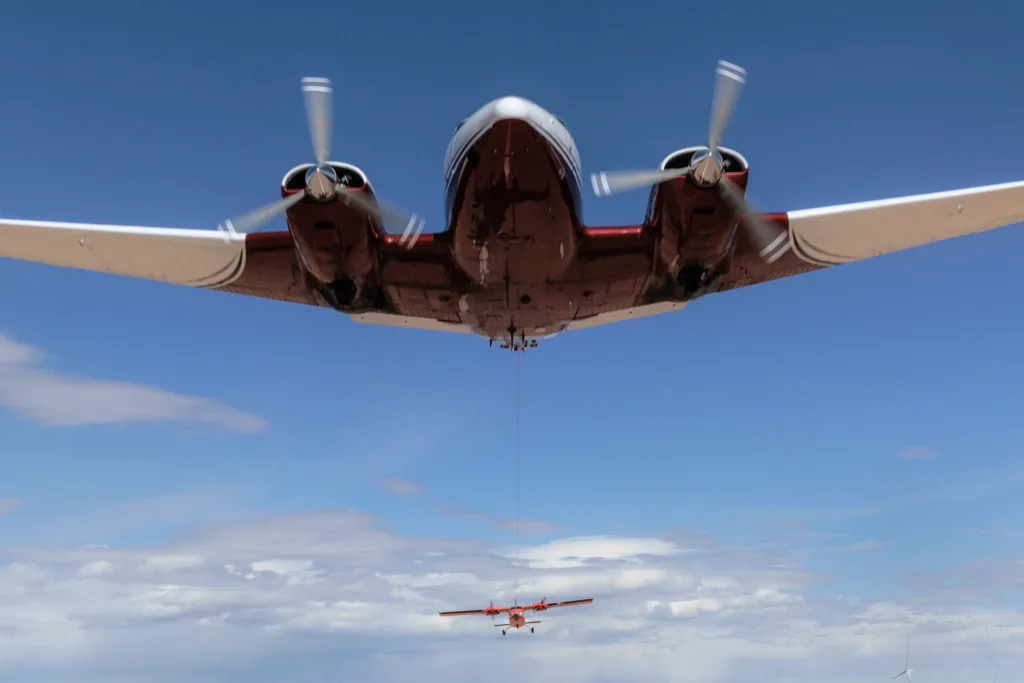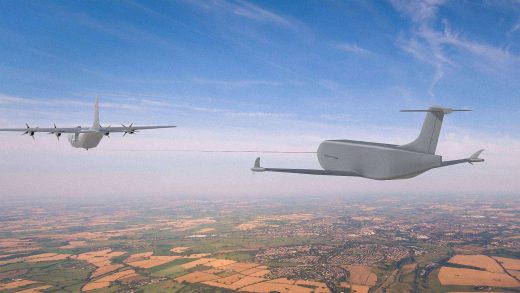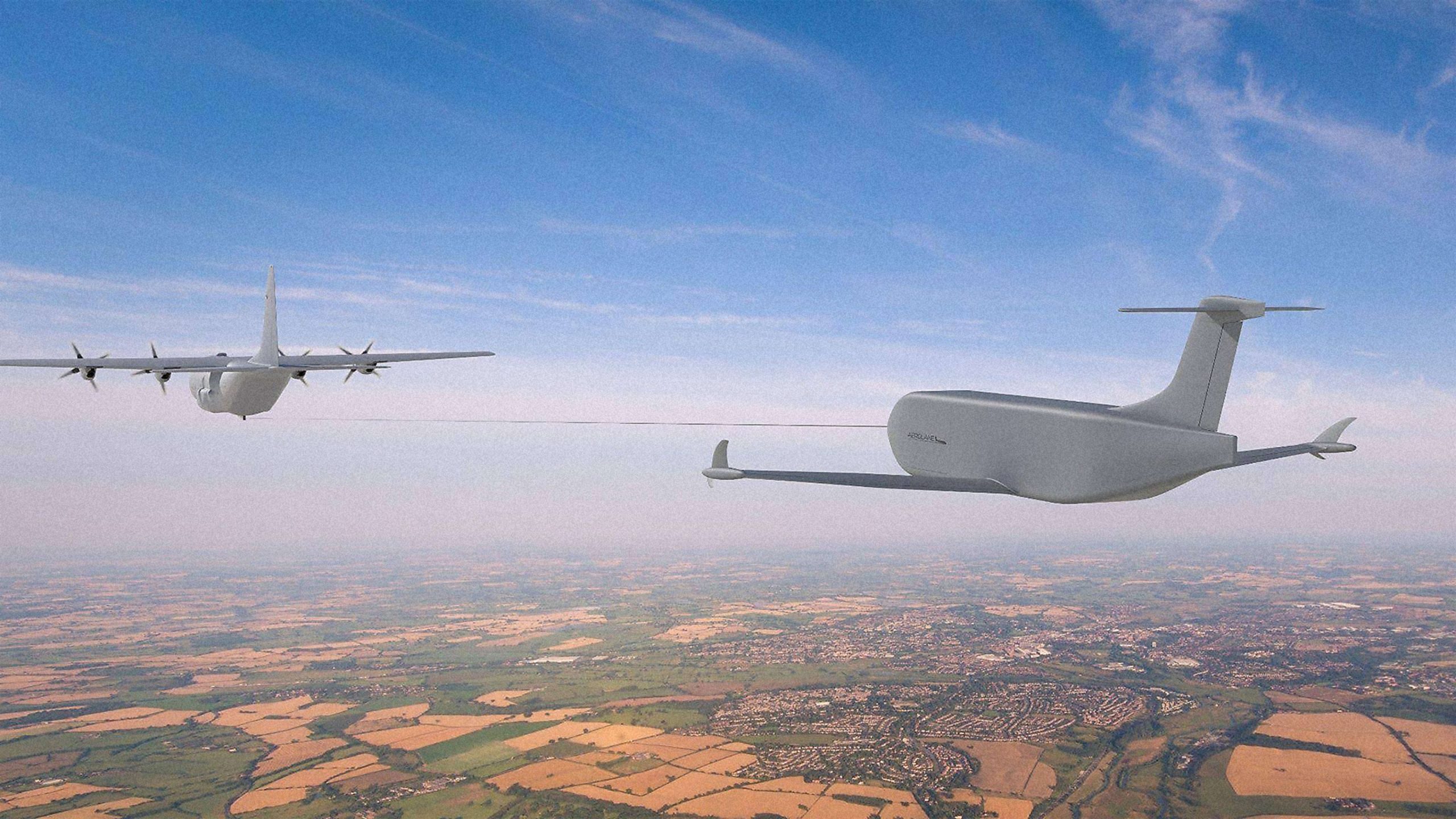These planes can tow trailers just like a truck. It could be the future of shipping
These planes can tow trailers just like a truck. It could be the future of shipping
By adding a glider without an engine behind a cargo plane, it’s possible to carry twice as many packages—and shrink the carbon footprint of air delivery.
BY Adele Peters
Shipping packages by plane has a massive carbon footprint compared to trucks, trains, or ships. But one startup has a new approach to shrinking the emissions from next-day air: attaching an extra glider to a cargo plane, a little like a U-haul trailer for aviation.
“You’re doubling the payload, but using only one engine and essentially one tank of gas,” says Todd Graetz, one of the cofounders of the startup, called Aerolane.
Graetz, who previously worked on drones for the railroad BNSF, partnered with Gur Kimchi and Doron Appelboim, who worked on drone delivery at Amazon. They realized that there must be a way to solve a common problem with air freight—boxes often fill up all of the cubic space inside a plane before they reach the weight limit, so planes don’t haul as much as they could.
As they studied the problem, they came across NASA research about using gliders. They also learned that the U.S. military had used gliders in World War II to deliver soldiers and supplies. The basic concept is simple: a tow line connects two aircrafts (the one in the back doesn’t have an engine).
When the plane and glider—dubbed an “Aerocart” by Aerolane—take off, it uses a little extra fuel. But once it’s at cruising altitude, “the glider is already at a rate of speed where it naturally wants to glide,” says Graetz. The glider takes advantage of the currents from the plane in front, in the same way that geese flying in a V-shape can fly more efficiently. “You can find pockets behind that aircraft where you literally are surfing on the wake of the air,” he says.
Some companies already use gliders recreationally now. It’s possible to book a ride in a place like the Arizona desert and let a small plane launch your glider into the air, where it then disconnects and soars silently on thermal currents. Aerolane will use existing Federal Aviation Administration regulations for gliders. It’s starting to work with the agency to get approval for the things it will do differently as it hauls cargo. That includes adding automation to control the glider as it follows a plane on long flights.
The gliders will attach to existing cargo planes in front. Aerolane also plans to start by using retired planes as its gliders, removing any parts that it doesn’t need, from the engine to passenger seats. Recycling old planes is a faster way to get the system into operation. “This is not a 10-year or five-year plan on some of this stuff,” says Graetz. “We’re going to put some of this into commercial use next year.” (That timeline will depend, of course, on getting FAA approval quickly enough.)

Eventually, the company plans to use custom gliders designed from scratch for carrying extra cargo. It will make the gliders in different sizes to pair with different sizes of airplanes. To lower emissions even more, the gliders could be used with planes running on sustainable aviation fuel. Right now, the alternative fuel is expensive, but because Aerolane’s system reduces the cost of shipping so much, it could make the new fuel financially viable on more flights.
The system has other environmental advantages. If companies like UPS or FedEx could use simple gliders—especially if those gliders are recycled from planes that otherwise would have been retired—they can avoid the carbon footprint of building complex new planes. It “naturally reduces emissions even before [they] put something into the air,” Graetz says.
The company is now in discussions with potential customers. Graetz argues that the approach could be widely used. “We don’t know of a situation where an airline operator would not be concerned about saving operational costs, fuel costs, wear and tear, and equipment,” he says. If around 30% of current cargo planes started using trailers, he says, it could eliminate around 60 million tons of CO2 emissions each year.
(10)



